Nasa's Ingenuity Mars helicopter set for first flight
- Published
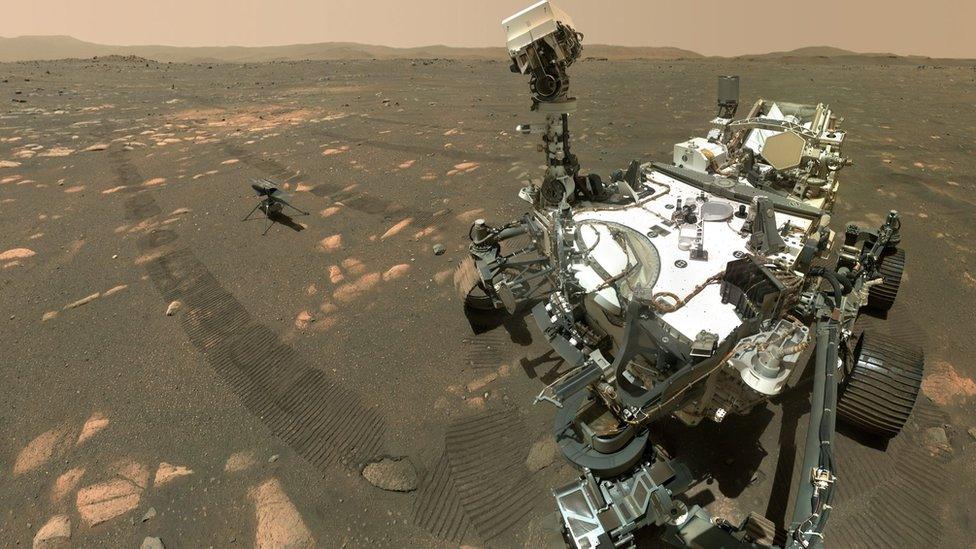
A selfie of the Ingenuity helicopter and the Perseverance rover
Nasa is set to make history as it attempts to launch a helicopter from the surface of Mars.
If successful, it would be the first powered, controlled flight on another planet.
The demonstration should see the Mars-copter - called Ingenuity - rise to about 3m, hover for roughly 30 seconds, swivel and then land.
But with never-tried-before technology and challenging flying conditions, the flight will be difficult to pull off.
"It feels absolutely nuts,” says Farah Alibay, a systems engineer at Nasa’s Jet Propulsion Laboratory (JPL).
"We've been flying on Earth for just over 100 years, and now we're like, 'yeah, we're gonna go to another planet and fly'. It's crazy. But that's the beauty of exploration. That's the beauty of engineering.”
Ingenuity is scheduled for lift-off at 07:30 GMT (08:30 BST) on Monday. The first data revealing whether the chopper experiment worked should start arriving back at Earth some three hours later.
This information has to be relayed through Nasa's Perseverance rover and a satellite at Mars that will beam it to JPL.
How this Nasa helicopter made history on Mars
Where will the flight take place?
The Perseverance Rover landed in a region of the Red Planet called Jezero Crater. The robot carried the helicopter beneath it as it made the perilous descent to Mars' surface in February.
Perseverance then drove to an "airstrip" about 20m away from its landing site, lowering Ingenuity to the ground and taking a selfie of the two of them.
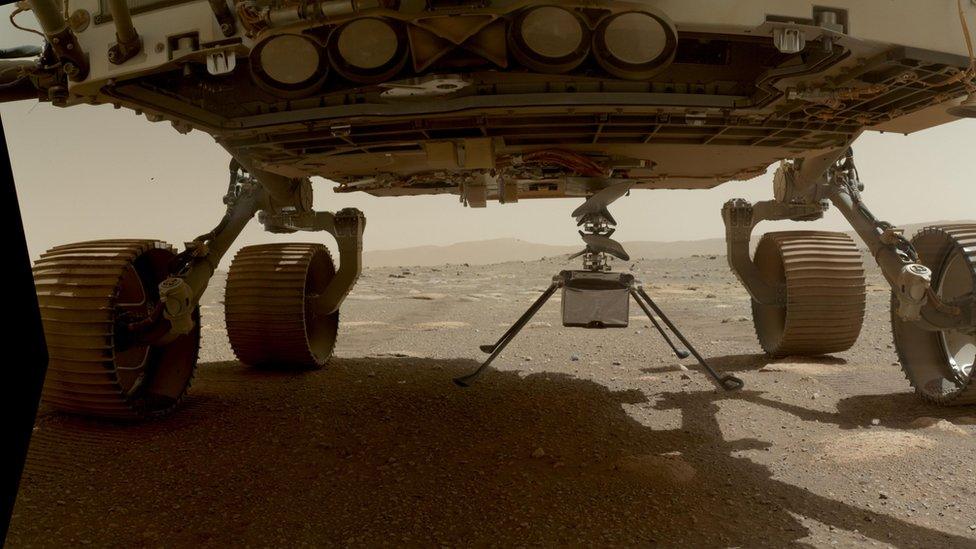
The helicopter was dropped onto the ground from underneath the rover
Engineers say the helicopter looks in good shape for its test flight. A software patch to take care of a technical glitch was installed and tested in recent days, but everything should now be ready for the big moment.
A full-speed rotor run-up was performed on Friday.
"We have fully confirmed that Ingenuity has enough energy and power to perform this flight at Mars," said MiMi Aung, Ingenuity project manager, at a pre-flight press briefing.
If the flight works, a further four flights will be attempted over the coming days, each one taking the helicopter further afield.
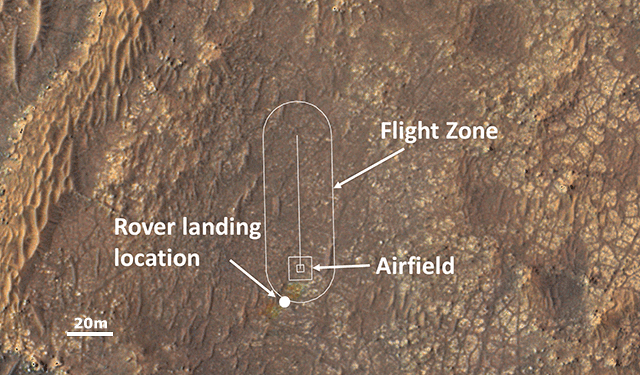
The flight zone is very close to where Perseverance landed in February
What makes flying on Mars so hard?
The atmosphere on Mars is extremely thin - about 1% of the density here on Earth - and this doesn't give the helicopter much air to "bite" into.
The pull of gravity on the Red Planet is less, which helps - but even so engineers have had to build their chopper very light. It has a mass of just 1.8kg (4lb).
The two 1.2m-long rotors spin in opposite directions at up to 2,500rpm. This is extremely fast - indeed, the rotor tips will be moving at about two-thirds of the speed of sound on Mars. This should provide the lift Ingenuity needs.
Nasa has been keeping an eye on the winds in Jezero. These could measure up to 20m per second - faster than what was tested on Earth. But the team believes the helicopter will cope.
What images will we see?
Ingenuity has two cameras onboard.
A black-and-white camera that points down to the ground, which is used for navigation, and a high-resolution colour camera that looks out to the horizon.
The rover will also be snapping away from a distance of about 65m. It will be using its zoom cameras to try to get some close-ups of the action. With luck we should also get to see some video.
All this has its complications as well. Both the rover and helicopter function autonomously and carry separate clocks. The timing devices will need to be in sync for the photography to work.
Key frames have already been selected for priority return in the data downlink on Monday. We'll just have to wait to see if these were lucky choices.
"We have practised it, so we hope everything will go well… But we know there'll be surprises," said Elsa Jensen, uplink operations lead.
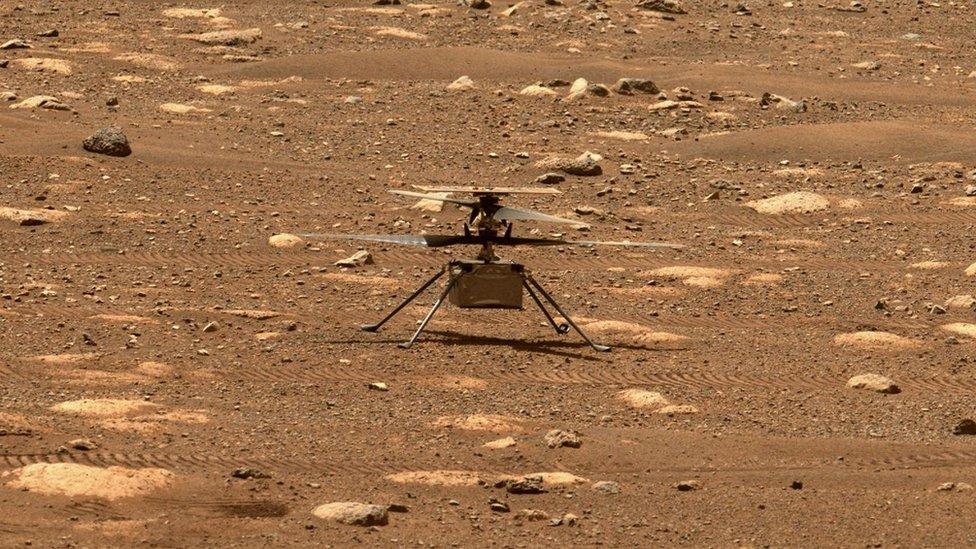
The flight could transform how we explore other worlds
Why is this flight so important?
The US space agency says the flight will be a "Wright Brothers moment" - a reference to the first powered, controlled aircraft flight here on Earth in 1903.
To mark the connection, a postage stamp-sized piece of fabric from a wing of the brothers' plane was taped to Ingenuity before it left Earth. It's worth noting that the Wright Brothers' first flight lasted just 12 seconds. Great things start with small steps.
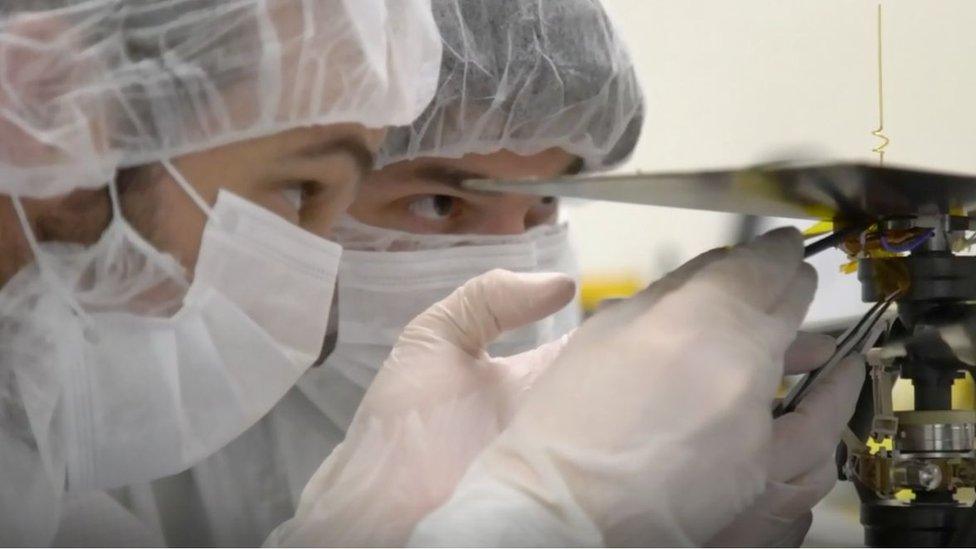
The Wright Brothers fabric is taped just under Ingenuity's solar panel
The hope is this small technology demonstration could eventually transform how we explore some distant worlds.
"You can traverse places without being hindered by the terrain in the same way as a land-based vehicle is,” explains Havard Grip, Ingenuity’s chief pilot.
"It could do scouting missions for future rovers, perhaps, or even for astronauts, and then we're also thinking about it in terms of the potential for carrying its own science instruments to places that are very hard to access."
Nasa has already approved a helicopter mission to Titan, the big moon of Saturn. This has a very thick atmosphere. Dragonfly, as the mission is known, should arrive at Titan in the mid-2030s.
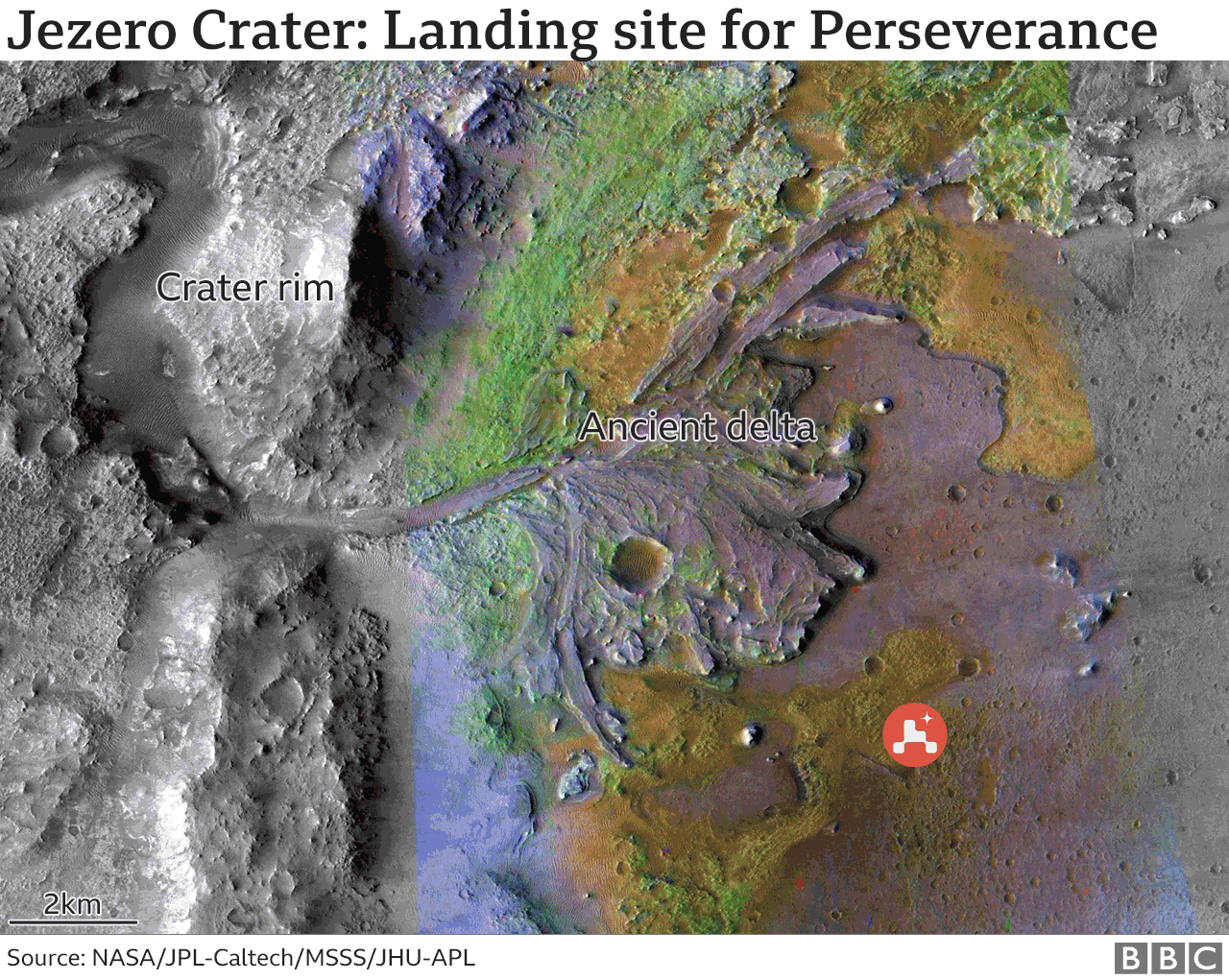
Follow Rebecca on Twitter., external
Related topics
- Published23 March 2021